
Do UV lights clean the air? Do ionizers kill viruses? Is ozone bad for occupants? Here’s what you need to know as an HVAC professional.
This is part 2 of 4 in the series called “Navigating IAQ as a Residential HVAC Professional”. Read part 1 here: Smoke Season
t;dr: You should look for independent, real-world testing results of UV lights, PCO devices, and ozone generators before selling them to your customers.
Introduction
This post relates to my earlier post on “Smoke Season” – where tens of millions may have their long-term health impacted this summer due to wildfire smoke exposure. The typical advice being relayed in the news and from health officials is to stay indoors, avoid exercise, drink water, wear a mask, use a portable purifier, etc. While these recommendations are valid, you’re not going to make any money from just providing a checklist of customer-driven activities.
My experience from working at HAVEN IAQ has shown me that most HVAC contractors do not understand the basics of IAQ, nor do they implement solutions that are proven to work. By “proven”, I mean scientifically tested to show that the solutions or products both clean the air and do not pose risk to the occupants health.
The Law of Unintended Consequences
As an HVAC professional, you can provide the equipment and parts that are available to you through your supplier networks. While most products carried by your suppliers are trustworthy, many IAQ solutions have not been adequately tested, and recent studies have shown that a particular set of air cleaning technologies come with unintended consequences.
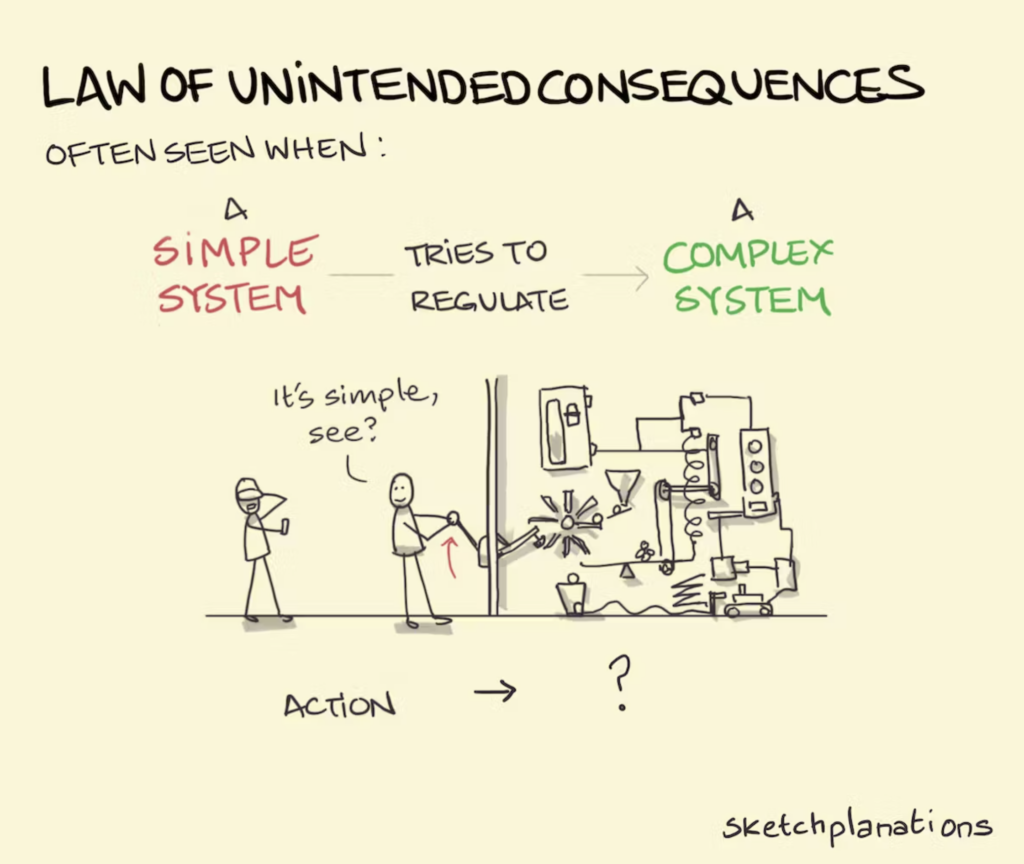
Any new technology, policy, or social change always comes with unintended consequences, which may or may not be foreseeable or immediately observable, and they may be beneficial, harmful, or neutral in their impact.
Antibiotics were developed to combat bacterial infections, but their overuse has led to the emergence of antibiotic-resistant bacteria, creating a significant public health challenge. Email was designed to improve communication efficiency, but it has also led to information overload and increased stress levels for many workers. The push for high hospital occupancy rates to increase efficiency has sometimes resulted in a lack of capacity during unexpected health crises, such as the COVID19 pandemic. And the list goes on…
This is why bodies like ASHRAE and the EPA are often slow in regulating or taking a position on new technologies – it takes time before we truly understand the impact and side effect. The role of science is always to improve upon our current understanding of the world, which means that we need to update the way we apply technology as the science evolves.
What’s in Our Air And Why it Matters?
As mentioned in my previous article on wildfire smoke, Indoor air is often more polluted than outdoor air. It’s a mix of particulate matter of various sizes, volatile organic compounds, skin flakes, dust mite carcasses, mold spores, and more.

Airborne pollutants can be categorized into two types: particles and gasses. Particles include things like asbestos, viruses, bacteria, mold, and allergens. Gasses include carbon monoxide (CO), radon, ozone (O3), volatile organic compounds (VOCs), and nitrogen dioxide (NO2). These pollutants are dealt with in different ways.
Different types of airborne pollutants affect our bodies at vastly different scales . Asbestos can do great damage in the lungs. Viruses and bacteria can spread disease just by getting into the upper respiratory system. Mold and allergens cause reactions in people susceptible to those pollutants. Unfortunately, the instrumentation required to speciate (categorize and quantify) these chemicals and particles is very expensive, so we usually just monitor total chemicals (TVOCs) or total particles within certain size ranges (PM10, PM2.5, PM1).
And when it comes to our health, we do know that the size of particles matters a lot. Many particles that float around in the air might otherwise cause no ill effects. But if they’re small enough (PM2.5), they can increase breathing problems, aggravate asthma, and reduce lung function. The really small ones (<PM1.0) can even get into the bloodstream, where they can lead to irregular heartbeat, nonfatal heart attacks, and premature death for people who already have heart or lung problems.
If you want to learn more, I’d suggest checking out Allison Bailes materials about IAQ on Energy Vanguard.
Commercial vs Residential IAQ
I recently conducted a deep dive into the market forces that prevent residential HVAC contractors adequately addressing IAQ problems, and I’d sum up the reasons as follows:
- IAQ is not enforced by code or standards, thus…
- IAQ is not the responsibility of a residential contractor, which means…
- IAQ is not taught in trade schools, and…
- IAQ “solutions” provided by manufacturers aren’t scrutinized or validated, leading many HVAC professionals and homeowners to invest in inadequate solutions
In the commercial building world, there are mechanical and occupational standards/regulations which result in better outcomes for occupants. Organizations like the ICC, ASHRAE, OSHA, and the EPA are directly or indirectly involved in enforcing IAQ due to the increased costs, complexity, risks, and stakeholder relationships present in the planning, construction, and operations of these buildings. Rating or certification bodies like WELL and LEED are now incentivizing building owners to maintain healthy environments, and schools like Harvard are helping commercial business owners understand the ROI of maintaining healthy environments for office workers.
Residential IAQ is a bloodbath in comparison, partially due to the reduced complexity and risk, but also because of the predominant culture of North American Households: The home is my castle, and I get to do what I want in it. This has led to most homeowners to ignore IAQ, or they adopt DIY solutions which may or may not work (air purifiers vs air fresheners, which often cause cancer). Without expert guidance, many are left to be exposed to chronic air pollution inside their homes.
Most organizations in the residential space (BPI, Pearl Certification, RESNET, Energy Star, etc) are focused on building performance and energy efficiency, but IAQ solutions are not central in their guidance for professionals. Thus, residential HVAC professionals are missing prescriptive steps on how to solve IAQ issues for your customer’s homes.
In my next articles, I’ll provide prescriptive solutions for you to offer to your customers. For now, I’m going to tell you what you need to avoid: electronic air cleaners.
Electronic Air Cleaners
Before COVID, residential electronic air cleaning technology didn’t get a lot of mainstream attention. Due to COVID19, we’ve now seen tens of millions of electronic air cleaners (EAC) being installed in anxious customer’s homes with the promise that it will keep them safe (some claiming that they “kill 99.9%” of pathogens). This surge in popularity has also attracted many experts to study these technologies and provide guidance on their use.
This is how I explain the effect of EAC technologies: they play “musical chairs” with the particles and chemicals in the air. They claim that X or Y pollutant is removed from the air, but their claim is based on a lab setting with a unique combination of other particles and chemicals present. That’s not how the air works inside of our homes.
The air is difficult to quantify, and homes across North America are unique and unpredictable. The HomeChem initiative did a deep dive into studying the complex chemistry of our air, concluding that far more research is needed to truly understand how to predict the composition of the air in our homes.
Thus, the real-world impact of EACs in a customer’s home is uncertain – often improving, but sometimes degrading the air quality for the occupants instead of improving it. Personally, I would rather have my lungs intact throughout my golden years rather than feeling good in the moment with the “fresh air smell” coming from my HVAC system.
So let’s take a look at the different EAC technologies that you could be installing in your customer’s homes, and the unintended consequences of each.
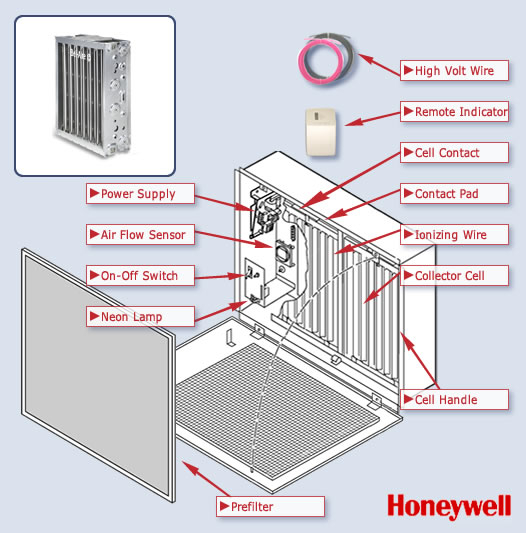
Edit: There is an older family of HVAC products which were sometimes called “electronic air cleaners” which are actually electronic air filters made of metal and used static electricity to make particles to stick to their internal surfaces. These aren’t common anymore, mostly because homeowners would never clean them (they needed monthly cleaning) and newer technology is available. Thanks to Eric Kaiser for the reminder!
UV Lights
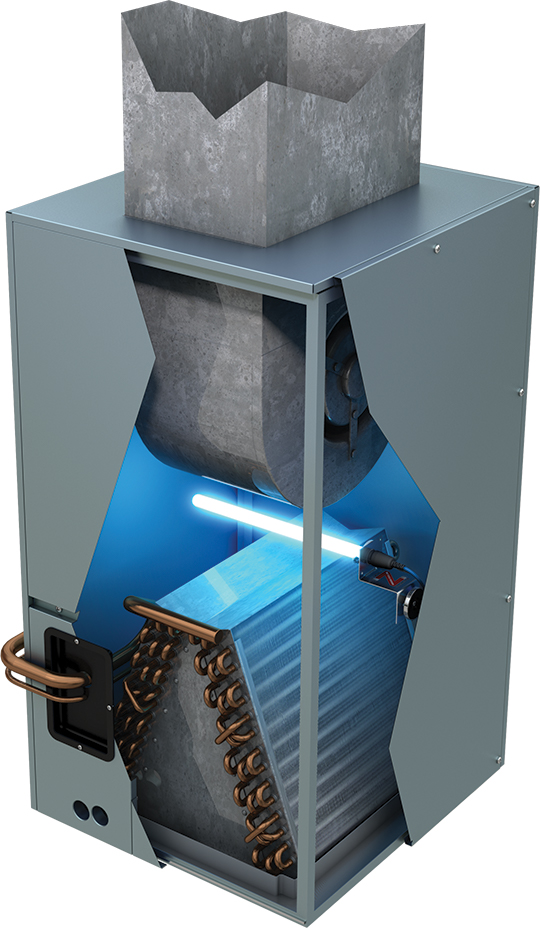
Coil-sterilizing UV lights are commonly installed by HVAC professionals – designed to be mounted near the evaporator coil to reduce the build-up of microorganisms on the wet surfaces. This buildup would otherwise reduce the system efficiency, and the microorganisms produce chemical and particulate matter that would be released into the air for the occupants to breathe. So yes, UV lights assist with IAQ – but as a by-product of its primary purpose.
Air-sterilizing UV lights became popular during the COVID19 lockdowns, which claim to kill viruses and bacteria flying through the air – not just on surfaces. Surface UV-C is widely used for disinfection across many industries, but sanitizing a moving airstream is a different story. To ensure that your target pathogen is killed by your UV light, you need to consider the “dose” – which depends on time and intensity.
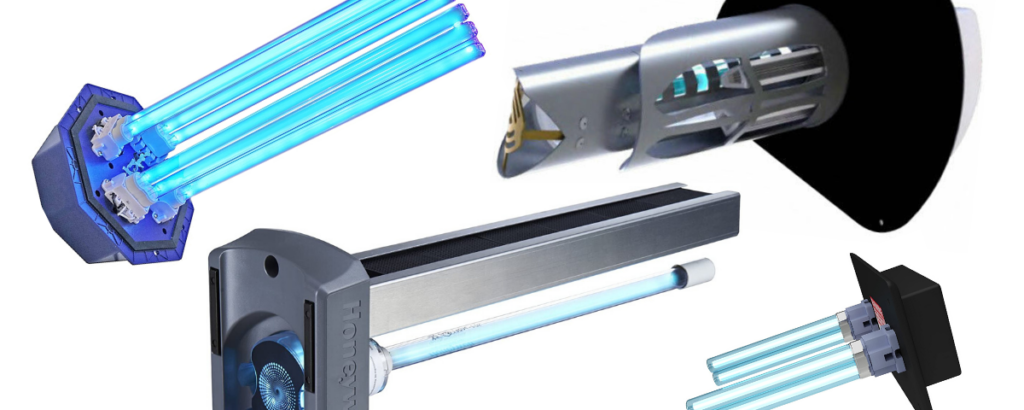
Unless you’re carefully engineering the system to benefit from Air-sterilizing UV lights, you might want to think twice before installing them:
- To actually work in airstreams, you need to ensure lower flow rates, large duct-surface area, and high intensity to achieve adequate dosing
- UV lights will destroy any non-UV stabilized plastics in the ductwork (eg some models of flex duct)
- Some products release ozone, so only ever use UV bulbs that are UL-867 or preferably UL-2998 verified)
- Pre-filter UV lights will get dirty and lose their effectiveness unless cleaned. Dirty UV lights even see a shift in their wavelength (which can lead to ozone generation)
- UV lights need to be changed every 9,000 hours or 1 year, so you and your client need to plan for that
- Secondary organic aerosols (SOA) can be generated by disinfecting doses of UV-C, which is difficult to account for during system design and operation due to occupant behavior and infiltration
But in our opinion, even coil-sterilizing UV lights are bandaid solutions which mask the fact that particles are getting past the filter and building up on the coil. You shouldn’t need a UV light if you can prevent particles from getting into the equipment in the first place. More on that in our next article.
Photocatalytic Oxidation
You will see this technology in devices that pair a UV light with a metal oxide semiconductor material (often titanium dioxide). The goal is to address contaminants such as volatile organic compounds (VOCs), bacteria, viruses, mold, and other allergens. A noble pursuit, but with unintended consequences.
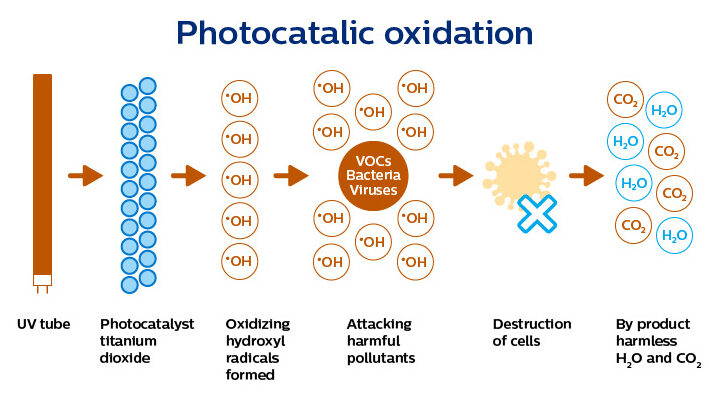
The photocatalytic oxidation (PCO) process uses light to accelerate a reaction which produces reactive oxygen species (ROS) such as Gaseous hydrogen peroxide (specifically dry hydrogen peroxide (DHP)) and hydroxyl radicals (OH). These are highly reactive, generally “attacking” surrounding particles and chemicals – and rendering viruses or bacteria inert.
You’ve probably seen words like “hydroxyls”, “plasma” and “oxidizer” in the marketing of these products that produce ROS. After the oxidation process, they are supposed to decompose into harmless water and oxygen. Seems great, except when VOCs are present – which they always are in the air of our homes.

When VOCs are mixed with ROS, harmful byproducts are created – such as formaldehyde, other aldehydes, ketones, acids, partially oxidized organic compounds. Though some manufacturer studies show that the levels produced are insignificant, professional bodies such as ASHRAE and the EPA take a position that devices which produce any levels of these pollutants are not recommended.
Ozone Generation
While there are some cases where an ozone generator can be used as a temporary measure, no ozone generating device should ever be permanently installed in a customer’s home. Indoor Ozone can linger in the air for hours or even days. The ozone they produce can be harmful even at low levels, and it can build up quickly in enclosed spaces.

Ozone can irritate and inflame the lungs and respiratory airways. Which can cause symptoms such as coughing, chest tightness, shortness of breath, and impaired breathing. Ozone can also worsen asthma symptoms, and may contribute to the development of asthma. Elevated exposures to ozone can cause permanent lung damage. Repeated exposure to ozone can even increase the risk of dying among persons already in poor health.
In my opinion – If a customer asks for an ozone generator to use while they occupy their home, it’s your responsibility to say no.
Sources: EPA – Ozone Generators that are Sold as Air Cleaners; Sanalife – Are Ozone Generators And Ozone Air Purifiers Safe?; Ozone Generators as Indoor Air Cleaners: New York State Department of Health; California Air Resources Board – Hazardous Ozone-Generating Air Purifiers
Ionization
While the chemical reactions are similar to that of PCO technologies, ionization devices use different mechanics to clean the air. Ionizers and bipolar ionizers emit negatively charged ions and both negatively and positively charged ions, respectively. They attract and neutralize pollutants like dust, allergens, and bacteria, with bipolar ionizers targeting a wider range due to their dual ion emission.
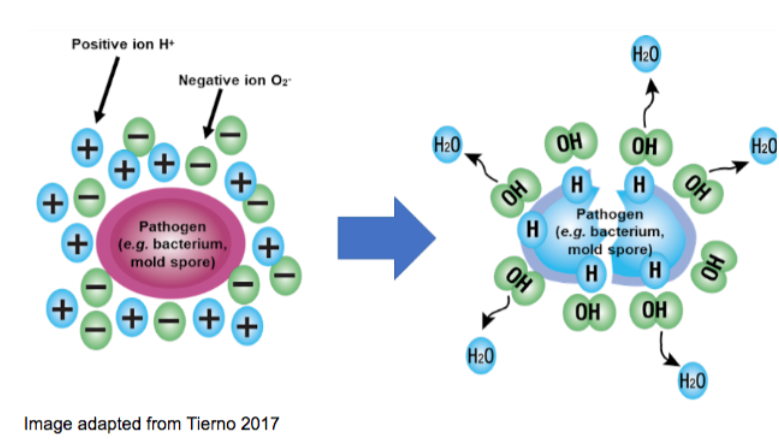
Just like with the other technologies listed in this article, the claimed benefits of ionization are spectacular: improved IAQ by removing dust, allergens, pollen, pet dander, mold spores, and other airborne bacteria. Theoretically, they can improve sleep and overall mood, and possibly treat mood disorders – even providing similar benefits to antidepressants. How magical!
However, their effectiveness varies wildly, and some devices may even increase harmful airborne chemicals. Thus, despite great marketing, they may only eliminate a few contaminants at best. The fine folks at ASHRAE and the EPA have provided the following guidance on ionization (and other EAC) technologies:
- The technology is still emerging, so manufacturer claims should be questioned
- Independent studies have shown little to no benefit for acute health symptoms
- They do not remove gasses or odors, and may not be effective against larger particles
- Low levels of ozone is often produced as a byproduct of ionization, meaning that these orgs cannot recommend the use of these products in occupied spaces (unless they meet UL 2998 standards)
In Summary
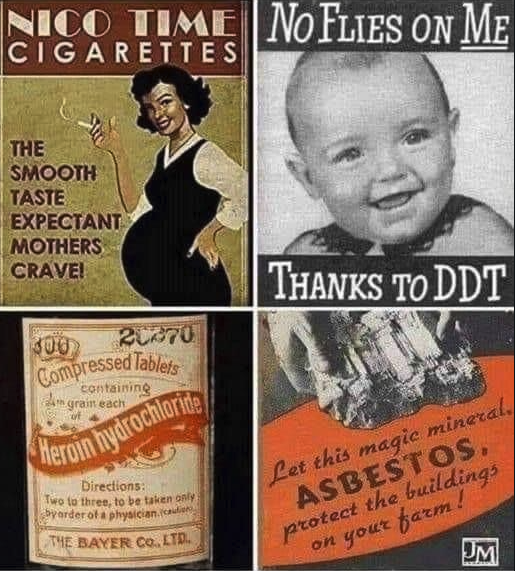
While EAC technology may be attractive, most have unintended consequences that outweigh their perceived value. The ones that work need to be carefully maintained or they will become an inconvenience and unnecessary power draw on the home.
We all want to satisfy our customers and retain a competitive edge, but is a bit of extra cash worth harming the lives of millions of people?
To avoid these unintended consequences, I would suggest following the recommendations provided by ASHRAE, the EPA, and other respected scientific & academic bodies who do not have conflicts of interest (they are not affiliated with the manufacturers or distributors of equipment). To sum up their guidance:
Be skeptical until you see peer reviewed studies which validate the manufacturer’s claims in your particular installation environment.
Unfortunately, these studies don’t exist yet for EAC technology.
Edit: If you are an electronic air cleaner manufacturer or sales person who can provide me conclusive, independently-verified evidence of their technology’s effectiveness in the real world situations, I’d love to incorporate that knowledge into my understanding and update this article! Please contact me through our contact page.
In our next article, we’ll go over the highest ROI solution that you can offer to your customers, regardless of where they live and what their home is like.



👏👏👏👏👏👏👏👏
Excellent Article- ill go back a tead the first and look forward to the mext one.